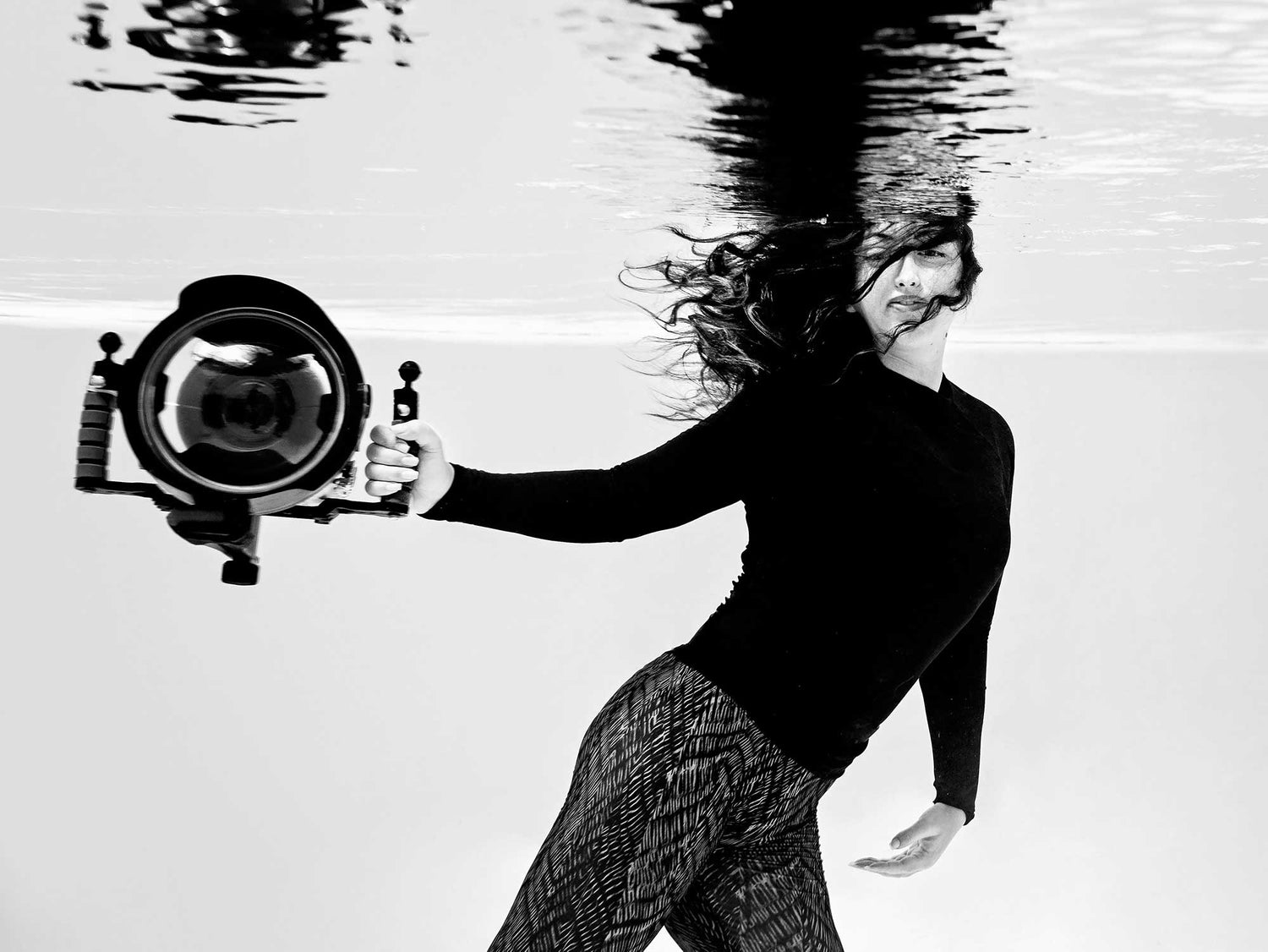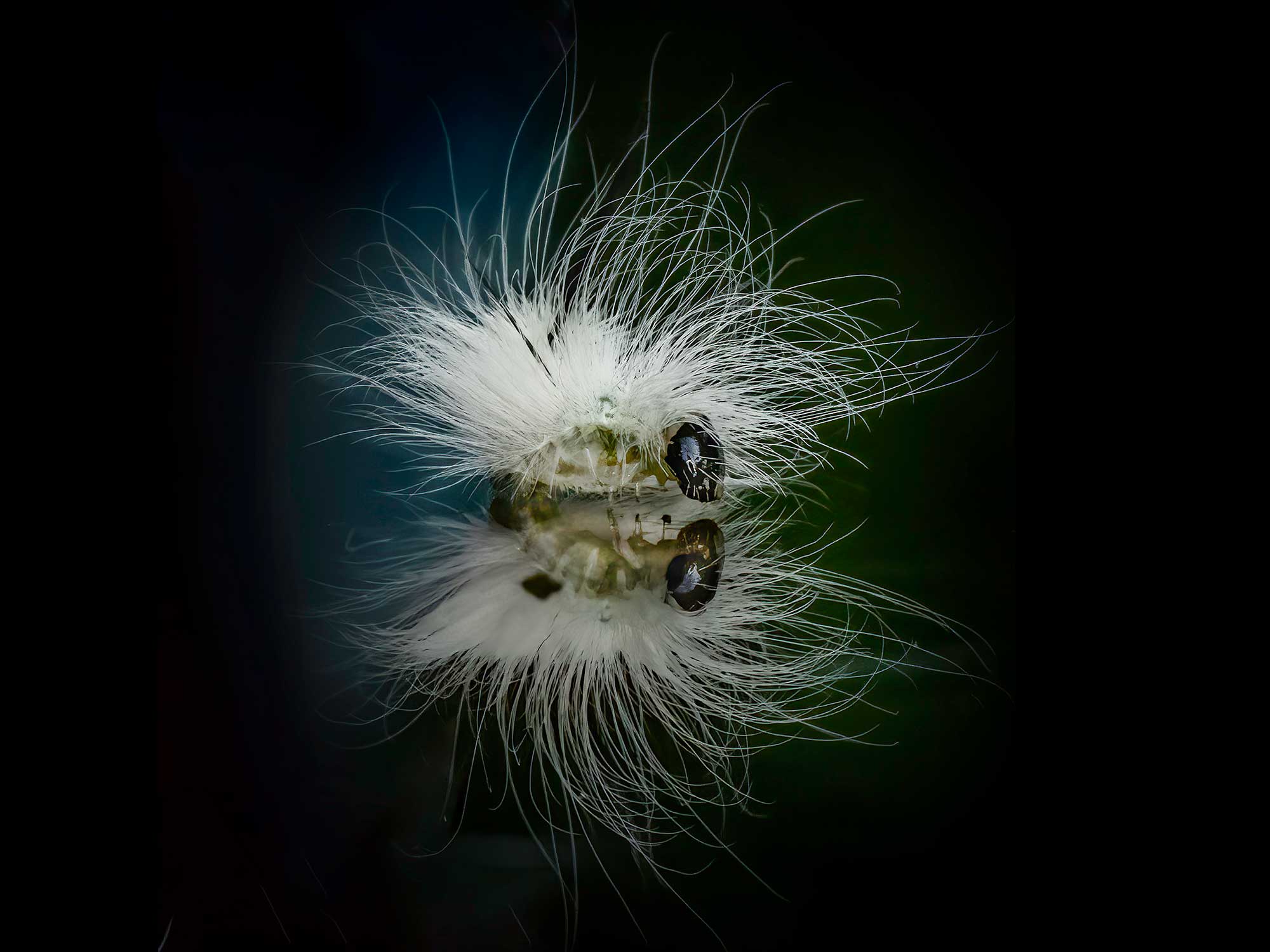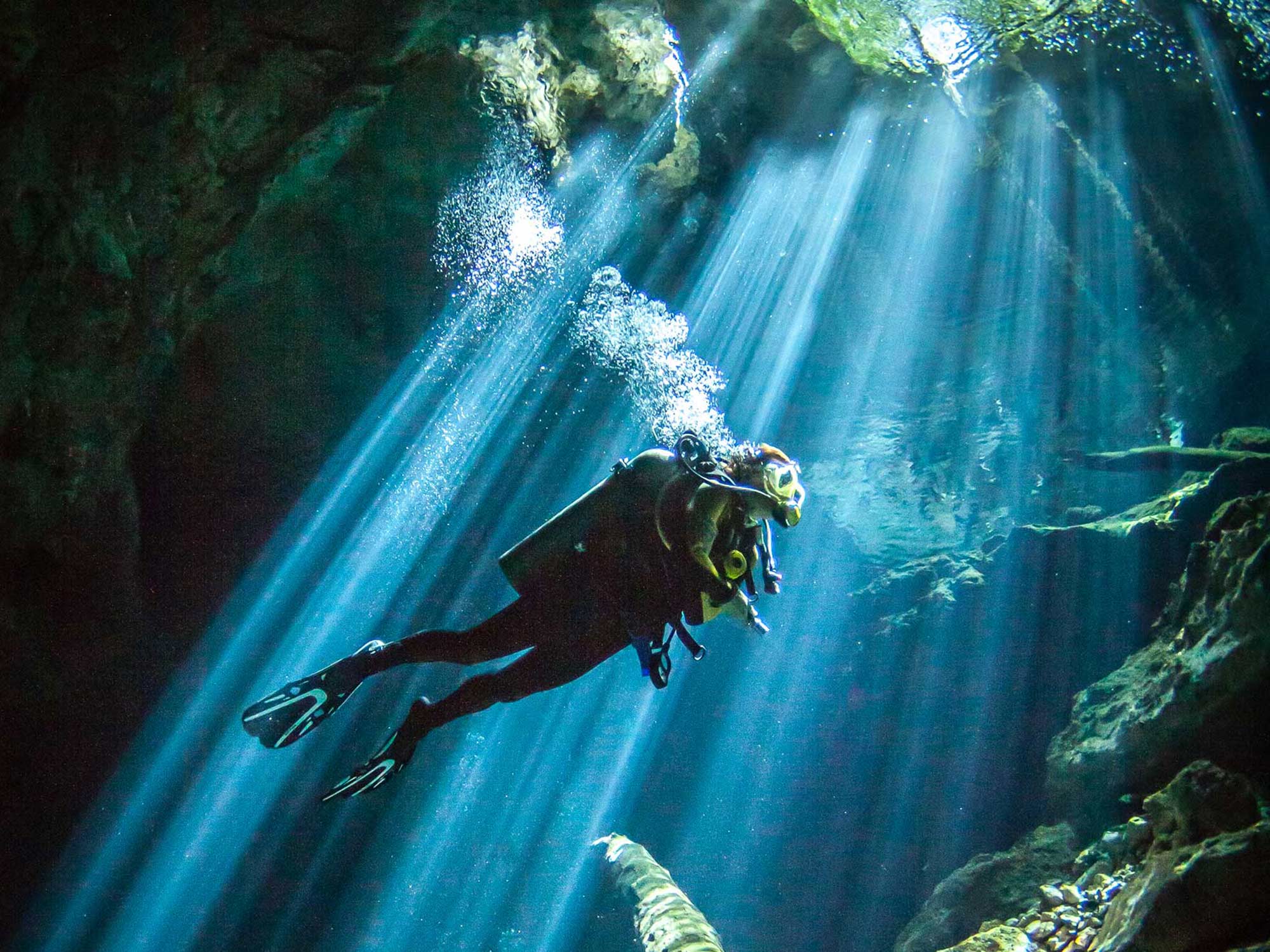By Alison Bounce
Whether it's your primary reason for putting your camera in a housing or a way to keep your skills sharp, underwater portrait photography is a rewarding way to exercise your creativity. Variations in lighting techniques and virtually limitless posing potential make it an art form that can expand as far as you want to take it. Professional underwater photographer, instructor, and Ambassador Alison Bounce shares her top 5 tips on improving your technique.
Tip # 1 Master Your Equipment
As photographer you have to know your camera perfectly. It's important to change your settings quickly if the light changes and your model is holding his/her breath underwater. Mastering your equipment makes their experience more comfortable and it's also a safety precaution. If you are less preoccupied on your housing you will be more focused on your muse and can assist them if they ask for help. A model who feels confident will invest his/herself more easily during the photoshoot. Finally, use the right equipment. Solid and quality material, easy to handle, makes you more professional.

Being underwater with a client or model is not the time to be learning the ins and outs of your gear. Make sure you know your camera and do some experimentation with settings before you hit the water. Photo © 2021 Alison Bounce
Tip # 2 Use the Right Lens
Underwater, you definitely have to use a wide-angle lens. However, the perfect lenses for portraits are wide but not too wide. A lens that is too wide may distort the subject and result in an unflattering image for your model. If you want to photograph the model in full, I recommend you use a 24mm with an 8" dome. You can create a beautiful ambiance, with horizontal or vertical poses, depending on the dimensions of the pool you're using. This setup is the easiest way to start underwater portrait photography. Another option, and my personal favorite, is to use a 35mm lens with a flat port. There is an optical magnification but portraits are sharper and less distorted, I use it for commercial photoshoots to focus on my subject.

Example using a dome port. Dome ports give you the absolute widest field of view underwater but can create some edge softness and chromatic aberrations, especially with rectilinear lenses. Keep this in mind when framing your subjects. Photo © 2021 Alison Bounce

Example using a flat port. The angle of view is not as wide due to magnification of the flat glass but the sharpness is more consistent across the frame. Photo © 2021 Alison Bounce
Tip # 3 Optimize the Light
The best light for a lovely underwater portrait is natural light. As you know, the deeper you dive the less light you get, so capture at the surface. The best lighting is maximum 1.5 meters (about 5 feet) below the surface. The colors and contrast are nicer and you will spend less time editing in post production. If you are shooting by a sunny outdoor pool you can install a big white sheet to diffuse light and remove mottling from the sun.

Just like in surface photography, natural light is a big benefit underwater. However sunlight is quickly absorbed as it travels through the dense water medium. The best natural light is no more than 1.5 m (5 ft) below the surface. © 2021
Tip # 4 Experiment with Poses
Underwater portrait sessions require a lot of preparation. One important preparatory step is posing inspiration. Talk with your model to define what pose they may do underwater to adapt to the photoshoot. You can draw a sketch to help you to visualize your ideas. On my part, I organize poses on my mood board from easiest to the hardest. Once in the water, I show the drawing, with my directions, and correct my model's pose step by step. Be patient and give your model time to adjust. At the beginning, the model needs 5 or 10 minutes to adapt to the conditions. Do not forget to provide encouragement and help more if you can.

Don't be fooled by the relaxed expressions you see from professional underwater models. Maneuvering into a pose and looking natural underwater is very difficult. Planning and preparation make difficult poses easier. Photo © 2021 Alison Bounce

When everyone is breath-holding and sometimes blind, it's critical to be on the same page. Weightless underwater allows a wide variety of positioning that isn't possible to model accurately on the surface. Drawing a sketch of your poses help both you and your model visualize the end product. Photo © 2021 Alison Bounce
Tip # 5 Less is More
People like dreamy photos with huge color props. It's beautiful, yes, but really not easy to do. In my opinion, forget the large sail and look for something different. Simply capture emotions or beauty. Do not content yourself to capture underwater just because it's spectacular. Use water to tell stories. Water is an amazingly creative tool, there are so many possibilities. I have shot more than 300 underwater sessions. I've tested many different settings of lighting, underwater decor, color sail, with many models but the best photo I shot was with a bare model. So natural, really simple. A pregnant woman floating just below the surface and her husband, kissing her forehead.

So often in life, simple is best. The sky (water?) is the limit, but you don't have to over-think it with costumes or props. Aim to tell a story or capture a feeling that you can convey to your audience. Simple images can be both striking and relatable. Photo © 2021 Alison Bounce
 Ambassador Alison Bounce was freediving in the Philippines when she saw a pregnant mother playing with her son in the water. It was a revelation. She returned to France and started developing her techniques and setting up a service combining photography with the underwater world. Now a specialist, Alison travels the world doing sub-aquatic shoots and teaching underwater photography. Check out her work at alisonbounceunderwater.com and follow her on Instagram @alisonbounceunderwater
Ambassador Alison Bounce was freediving in the Philippines when she saw a pregnant mother playing with her son in the water. It was a revelation. She returned to France and started developing her techniques and setting up a service combining photography with the underwater world. Now a specialist, Alison travels the world doing sub-aquatic shoots and teaching underwater photography. Check out her work at alisonbounceunderwater.com and follow her on Instagram @alisonbounceunderwater
Additional Reading
How Underwater Maternity is Different From Topside
Getting into the Underwater Photography Business with Karen Bagley
How to Photograph Dogs Underwater
How to Photograph Superheroes Underwater
Jenna Martin's TEDx on Becoming an Underwater Portrait Photographer
Behind the Scenes of Alison Bounce's Underwater Portraiture Workshop 2019
Freediving a 60 Ton Statue in the Bahamas with Jenna Martin
The Right Lens for Every Situation Underwater
Diving Into Underwater Portraiture Significant Moments 2019 Workshop













